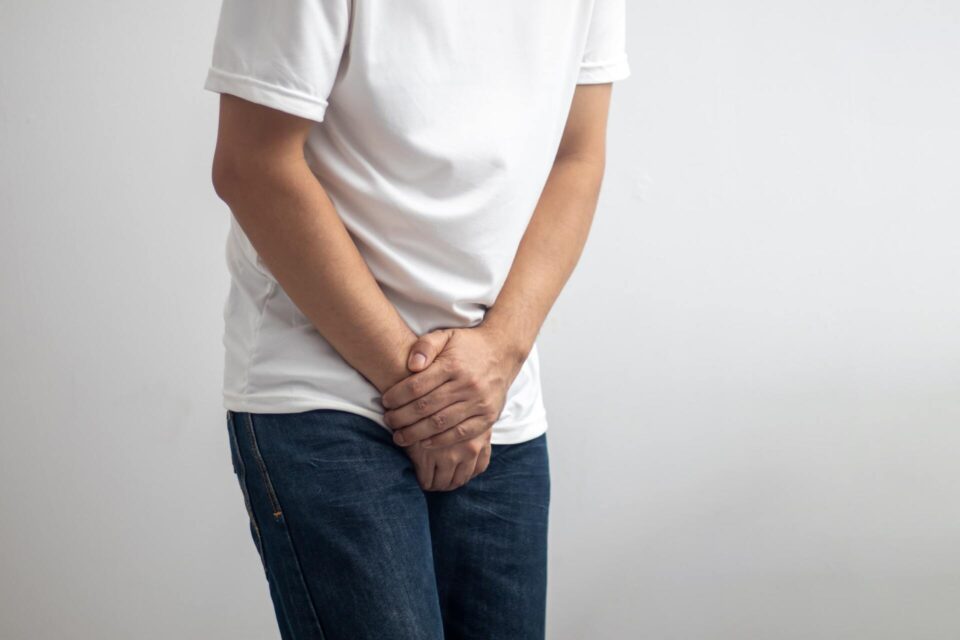Author: Northwoods Urology

Women and men have pelvic floors that consist of the group of muscles that support organs such as the bladder, the rectum, the uterus in women, and the prostate in men. Pelvic floor dysfunction occurs when people are unable to control their pelvic floor muscles when they become overly tense or weak. According to a 2014 study, one in four women have one or more pelvic floor disorders, and women are more likely to experience pelvic floor dysfunction as they age. Despite its commonality, many women are unsure of how to recognize the symptoms of pelvic floor dysfunction and how to best treat their pain.
Here are five symptoms women with pelvic floor dysfunction may experience:
Urinary incontinence
Urinary incontinence is the most common symptom of pelvic floor dysfunction in women. Although there are several types of urinary incontinence, women should watch for leaking whenever they cough, exercise, or laugh. This is known as stress incontinence and is a sign of a weak pelvic floor. A healthy pelvic floor prevents the bladder from leaking or from emptying unusually when using the restroom. People can treat incontinence in their daily lives, but we urge you to see a urologist when it begins to negatively affect your quality of life.
Pain during intercourse
Women whose pelvic floor is unable to properly relax may experience pain during or after sexual intercourse. Medically known as dyspareunia, it is often described as persistent, sharp, or aching pain. The cause of dyspareunia can be identified by recognizing if the pain is superficial or felt deeper internally. Dyspareunia can be attributed to several other conditions and can be managed with over-the-counter products. However, painful intercourse can also be an indicator of a more serious physical condition. An involuntary contraction of the pelvic floor muscles could be the reason behind the discomfort.
Constipation
Like pelvic floor dysfunction, constipation is a common digestive problem that many adults face. Constipation occurs when a person has fewer than three bowel movements per week or has straining bowel movements. The puborectalis muscle is responsible for contracting the rectum for bowel movements to occur when needed. If the puborectalis muscle can’t effectively relax, stool is unable to pass through the rectum. In addition to constipation, another symptom of pelvic floor dysfunction is leaking stool or fecal incontinence. This occurs when pelvic muscles weaken and cannot contract effectively.
Pelvic/Lower back pain
Pain in various structures of the pelvic region can be a symptom of many serious health conditions, including pelvic floor dysfunction. Besides the vagina and the uterus, women may experience pain and discomfort in the pelvic floor muscles, bladder, rectum, and lower back. Coexisting health conditions or traumatic injuries are possible causes of nerve damage and the weakening of pelvic floor muscles. Constant unknown pain in your pelvic region is a sign you need to see a urologist urgently.
Pelvic muscle spasms
Spasms in the pelvic floor muscles involve painful, involuntary contractions similar to muscle cramps in other parts of the body. They can become more painful after intercourse or a bowel movement, sitting, or lying down. These spasms are a common symptom of nonrelaxing pelvic floor disorders such as levator ani syndrome and vaginismus. Urologists will check for muscle spasms, knots, or weakness as a part of a physical evaluation for pelvic floor dysfunction. Just like other symptoms of pelvic floor dysfunction, muscle spasms and pelvic pain can be treated at home with exercises and therapy devices.
Are you experiencing symptoms of pelvic floor dysfunction? At Northwoods Urology, our experts can provide treatment and coach you through pelvic floor exercises to alleviate your pain and discomfort. We are a judgment-free clinic that puts the needs of our patients first. Contact us today to find out how we can help you!





